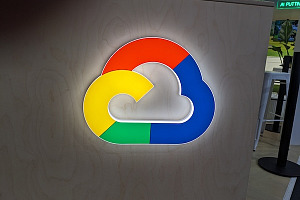Thales announced on Monday it is partnering with Google to launch its new eSIM Discovery service that aims to make it easier for users to download and activate eSIMs onto compatible Android devices, including tablets, laptops, and smartwatches.
When eSIM devices are first turned on, they must locate the subscriber's desired operator and download the appropriate subscription to activate cellular access. Thales says its cloud-based eSIM Discovery service makes this process essentially a one click activation, allows eSIM profile activations wherever and anytime a device is turned on.
When a user initially subscribes to a new mobile network, a message will appear on the user's mobile device screen telling them that a profile is ready for download. Once they accept, the subscription is instantly downloaded. Alternatively, the user can check for a new profile through the mobile device setup wizard or settings menu.
Thales – which has deployed over 300 eSIM platforms deployed worldwide – said its cloud-based solution is highly scalable to support all Android devices and carriers around the world.
"Thales is pleased to work with Google to provide a standardized, simple, and secure way to activate eSIM subscriptions, making life easier for users and Android device makers,” said Eva Rudin, EVP for mobile connectivity solutions at Thales. “Any mobile operator that currently uses our subscription management platform may already integrate to this solution and start offering a one-click eSIM activation experience to all users with an Android device.”
According to GSMA Intelligence, there will be over 3.4 billion eSIM-enabled devices by 2025, with 98% of mobile network operators aiming to offer eSIM services by that time.
eSIMs are becoming an increasingly attractive prospect in developing markets with high prepaid user bases. Swapping physical SIMs for eSIMs can help operators save money on distribution costs, while customers don’t have to make a trip to the local shop every time they need a new SIM. eSIMs also enable customers to have multiple SIMs on a single device.
However, ease of installation has been an issue for eSIM offerings, particularly for IoT devices, because eSIMs have previously relied on SMS for profile activation.
According to a new report from Juniper Research, the GSMA’s new SGP.32 technical specification for eSIM remote provisioning for IoT devices – which enables the remote activation of eSIM profiles via an eSIM IoT Manager – will help boost adoption of eSIM for IoT use cases.
Juniper also expects the imminent arrival of further GSMA standards like SGP.42 to drive IoT eSIM adoption even further. SGP.42 provides similar functionality as SGP.32, but specifically for iSIM devices. iSIMs further reduce the form factor of devices, whilst retaining the same functionality.
Juniper is forecasting the global number of IoT eSIM connections to grow from 165 million in 2024 to nearly 1.3 billion by 2028.

























